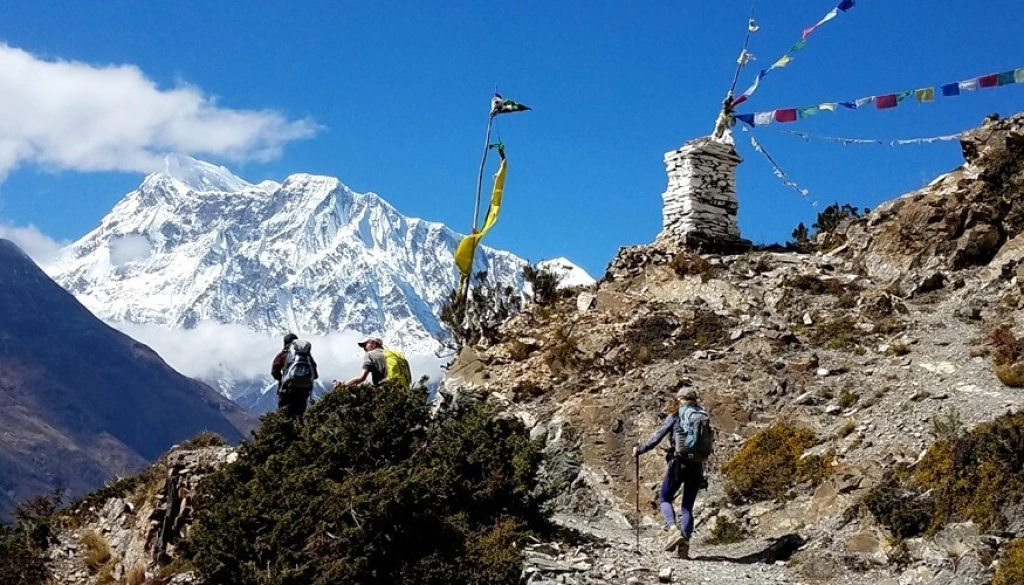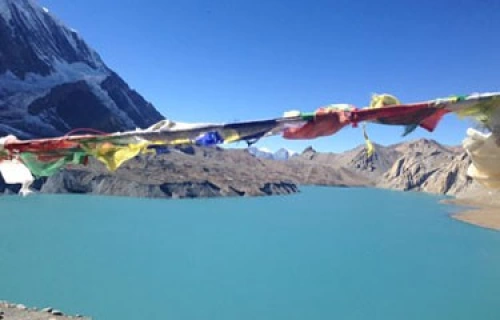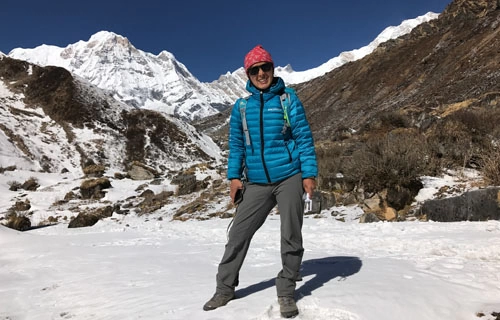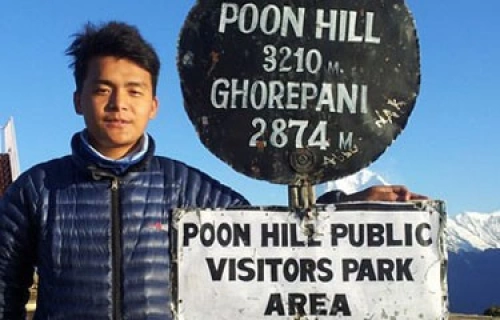Departure Note:
Guaranteed - We already have trekkers booked for those dates and you can join the group.
Available - The date is available to book and once you confirm your trip it will be guaranteed.
Limited - The departure date is filling fast and only limited seats are available to join.
Closed- The Trip cannot be booked on that specific date. Contact us for customized dates.
The departure dates are your arrival dates in Nepal.
We have set dates for departure to the Amazing Mini Annapurna Circuit Trekking. So, pick your preferable date and let the adventure begin.
Mini Annapurna Circuit Trekking is available and can be done throughout the year. So, if the date you prefer is not listed on our departure dates then you can contact us directly to book the trip on your own desired date.
We have listed the price up to 12 trekkers at maximum. If you are more than 12 trekkers, then please feel free to contact us for amazing discounted group price and further booking process.
Private Trips to Mini Annapurna Circuit is possible on any date of the year. Contact us to design your own private trips with you loved ones.
Solo Trips: Single trekkers are always welcome to join the trek. On your arrival at Kathmandu, you’ll have a single room in Kathmandu Hotel as per your requirement and have to share a room at the local teahouses during the trekking.
Useful Info
The Best Time to do the Mini Annapurna Circuit Trekking:
The best seasons for trekking in the Annapurna region are spring (February to late April) and autumn (late September to late November). Winter trekking is also possible for Ghorepani, Poonhill, Ghandruk, Annapurna Base Camp, and Kali Gandki. However, it is not the best time for the Annapurna circuit as the Thorung La pass may have too much snow.
Tea Houses on Mini Annapurna Circuit Trekking:
Village tea house lodges have plenty of character and good food. The simple rooms usually have two narrow beds. When you stay in the tea houses you will have close contact with the Nepalese people and are directly contributing to the local economy.
Safe Drinking Water on Annapurna Circuit Trekking:
We suggest that you drink boiled water or bring chlorine tablets to purify the normal water available in the guest houses along the way. There is a small fee charged for the boiled water. Several guesthouses have Euro-guard filters. Although mineral water is available in most places, there is no provision to dispose of the plastic bottles, so we encourage the guests to do what they can to protect the environment.
Washing and Toilet Facilities for Mini Annapurna Circuit Trekking:
Most lodges offer hot showers, though sometimes a hot shower means a bucket of hot water. You can ask your trekking guide about the availability. For ecological reasons please try and limit your use of hot water unless the water is solar-heated. Please note that at higher altitude and in colder seasons there is very little chance to have enough hot water for all the trekkers. If the water is frozen then ask your guide to get warm bowl of water. Every lodge will have some kind of hand washing facility but it is good idea to carry a bar of soap with you. Toilets are usually Asian squat style and vary in how clean they are. Normally toilets are outside the lodge but now some lodges have attached or indoor toilets. The rubbish bin in the toilet is kept for your used toilet paper.
Re-charging Batteries of Electronic Items on the Trek:
You can recharge your digital camera, iPod, batteries etc. with electricity or solar power sources. You may need to buy an adaptor in Kathmandu before the trip since the plugs in Nepal might be different. The lodges charge a small fee per hour for recharging facilities.Nepal uses 220-240 volts to power your appliances. The sockets fit both round and flat plugs.
Spending Money per Day:
In Kathmandu we suggest you allocate US$ 10 - 15 per meal, although it depends on your spending habits. On the trek, all your meals are included, but you may wish to purchase extras which are not included in your package, such as chocolate bars, Coca Cola or a beer. US$10 - 15 a day should be enough, but keep in mind the cost of all items increases proportionately with the distance from the trail head.
Cultural Aspects:
The most prominent ethnic groups in the Annapurna region are the Gurungs, Thakali, and Manangba. The Gurungs are the most widely dispersed, being found from the hills of Gorkha district to as far West as Palpa. The Thakalis come from the upper Kali Gandaki Valley around Jomsom, where their traditional farming has been supplemented by trade, in particular the hotel and restaurant business.
Clothing and Equipment:
For the Annapurna Circuit Trekking, the following equipment is essential. This list is given as a guideline; you should make adjustments according to your needs, interests, duration of your trip, season of your trip, etc. You can find all of this gear to hire or buy in Kathmandu. The majority of the gear available in Kathmandu is cheaper, as it is locally manufactured. You can also find better quality gear imported from China, as well as some very high quality branded gear. {More detail }
Travel Insurance for Mini Annapurna Circuit Trekking:
It is strongly recommended to be sufficiently protected when you go into remote areas. You need specialized travel insurance that covers emergency evacuation, injury, lost baggage, liability and medical treatment. Make sure the insurance covers all the activities that you will be undertaking during your stay in Nepal. Annapurna Foothills Treks and Expedition Pvt. Ltd. can organize the appropriate medical response based on your policy.
Safety:
When travelling in remote mountain regions, uncertainties such as weather, health problems and natural disasters require a certain amount of flexibility. While our goal is to follow the itinerary, that is not our first priority; your safety is always our first priority. Annapurna Foothills Treks and Expeditions request your cooperation to accept the decisions and advice of our trusted and experienced guides if they deem it necessary to change or cancel any part of the itinerary due to safety concerns.



